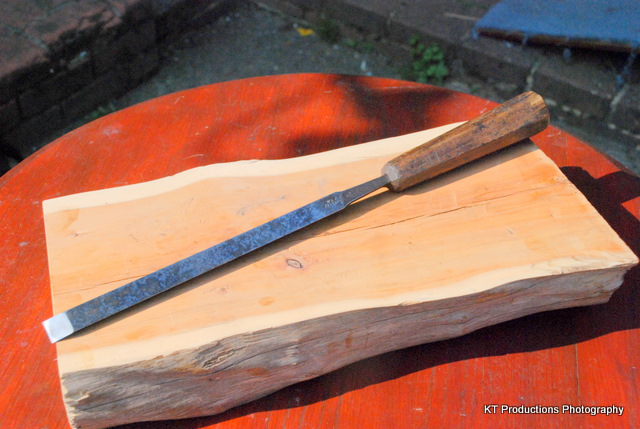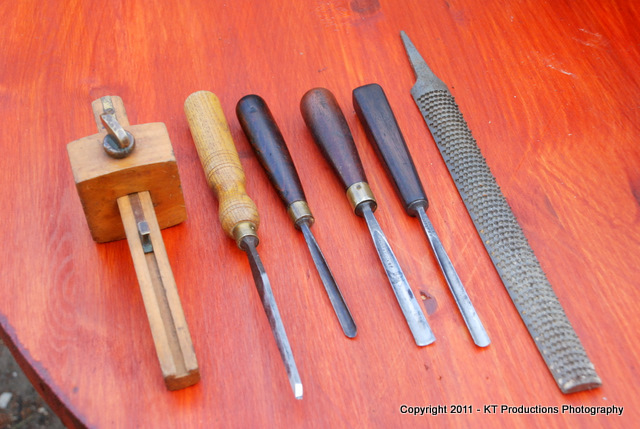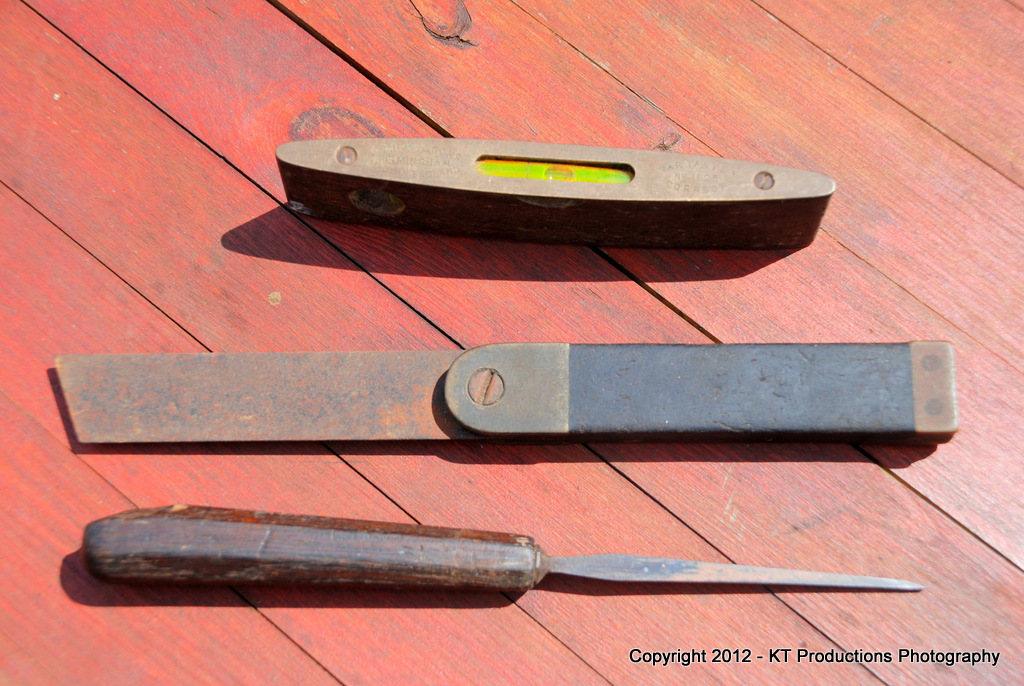My guess is early to mid 19C. I have a number of chisels with handles like that....a lot of them happen to be carving chisels that I sadly sold...(by Addis no less!)
This is a WARD....
This was the Addis...a few generations there....
Professor AndyT will be along later with the catalogue shots but you are right in saying this style of handle predominates in the Seaton Chest...and indeed, a lot of the better ones are
Cast Steel...so this is a justifiable conclusion. The ones in the Seaton chest, John Green, T.Shaw and Cam and Brown total sixty in all....and the gouges all have this flaired octagonal handle.
The reason why they are very thin at the edge is that the bevel-edge chisel we know today did not come into use until about 1870 and so they had to be very thin to cope with fine dovetail work...sometimes only 1/8" thick according to the Seaton book. This made them much more susceptible to damage.
This beautiful tiny mortice chisel I picked up at the bootfair....
...probably dates from around that period. The steel would have been available to the carpenter....the handles as well...or you would make one out of your scrap. This is why so many gunsmiths have tools with walnut handles...something I search for all the time!
The dating of these tools is something of a black art. The importance of the Seaton chest and especially the surviving inventory are for this very reason, a valued source. Very little documentary evidence survives before this time and one is left with dating by guesswork alone. We know "available from" dates...but little before.
Lovely chisels though mate...look after them!
Jimi
EDIT after reading through CC's response properly....- Yes what he said! 
and "CAST" or "CRUCIBLE" steel dates from after 1751 though whether Benjamin's (Huntsman not Seaton!) invention was stamped in the metal until later that decade is anyone's guess!? Anyone know of the earliest example pre-Seaton? Prof? 8)







































